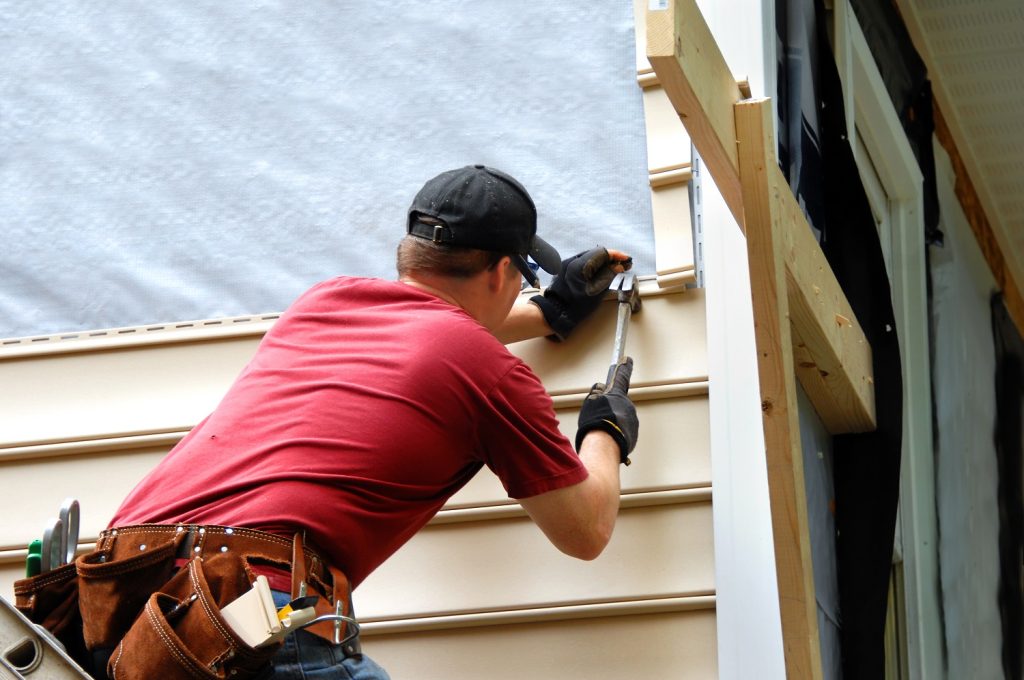
If you choose vinyl siding for your home, you’ll probably need to cut some vinyl pieces. They may need to repair a damaged part, fix a hole, or get rid of parts of the panels they don’t want.
Understanding how to cut vinyl siding not only gets you ready for the job but it also helps you pick the right tools for making clean, exact cuts. Here is a basic outline of what you must do to complete the process on how to cut vinyl siding.
How Vinyl Siding Works
We need to ensure you understand vinyl siding before we get to the tools. Vinyl siding is popular with homes because it is cheap, lasts long, and is easy to keep up. It comes in many colors and styles, so you can make it fit your needs when you want to improve the outside of your house. If you want to improve your home, you need to know how to cut vinyl siding carefully.
Choosing Quality Vinyl Siding
Opting for high-grade vinyl siding can be a game-changer in the overall outcome of your project. This subsection will guide you through the various factors to consider when selecting vinyl siding, ensuring durability and visual appeal.
Necessary Permits and Regulations
Before initiating any home improvement project, adhering to the necessary permits and regulations is essential. This part will elucidate the steps to obtain the required approvals, ensuring a smooth and legal operation.
Safety Precautions
Safety should never be compromised. This segment outlines the safety measures that must be implemented, safeguarding against potential hazards during the cutting process.
Essential Tools for Cutting Vinyl Siding

1. Circular Saw
A circular saw is a powerful tool used for making straight cuts on vinyl siding. Equip it with a fine-toothed blade to ensure smooth and precise cuts. Remember to set the blade depth to match the thickness of the siding to avoid any splintering.
2. Tin Snips
Also known as aviation snips, these are hand tools perfect for making quick and minor cuts, especially around the corners and edges. They come in handy when cutting shapes or angles that a circular saw cannot achieve.
3. Utility Knife
A utility knife with a sharp blade is essential for scoring and snapping the vinyl siding. This method is particularly useful for making vertical cuts. Ensure extra edges are on hand, as vinyl siding can dull blades quickly.
4. Chop Saw
A chop saw can be a significant time-saver for projects requiring numerous accurate and consistent cuts. Its stationary nature allows for precise cuts, making it a professional favorite.
5. J-Channel Cutter
This specialty tool is designed for cutting J-channels, a type of trim that holds the vinyl siding in place. It allows for creating clean and neat cuts, enhancing the overall look of the installation.
Safety Gear
Working safely should be your priority. Apart from the tools mentioned above, you also need to invest in safety gear, including:
- Safety Glasses: To protect your eyes from flying debris.
- Ear Protection: To shield your ears from the noise power tools generate.
- Gloves: To protect your hands and ensure a firm grip on the devices.
- Dust Mask: To avoid inhaling dust and particles.
Equipping yourself with the right tools is the first step towards a successful vinyl siding project. Precision and safety are paramount, and choosing quality tools can impact the outcome. Happy renovating!
Note: When using these tools, always follow the manufacturer’s guidelines and advice to keep yourself safe and get the best results.
How To Cut Vinyl Siding with Various Tools

Depending on the tools you have available, you can choose from various techniques on how to cut vinyl siding. We’ll guide you through each method, whether using a saw, opting for tin snips, or experimenting with a utility knife. Here, we break down the five essential tools for cutting vinyl siding, the materials you will need with each, and a step-by-step guide on how to use them.
1. Circular Saw
A circular saw is ideal for making straight cuts on vinyl siding due to its power and precision.
Materials Needed:
- Circular Saw
- Fine-toothed saw blade
- Vinyl siding
- Safety glasses
- Ear protection
Steps on How to Use:
- Preparation: Set up your work area and secure the vinyl siding onto a stable surface.
- Safety Gear: Put on your safety glasses and ear protection.
- Blade Installation: Install a fine-toothed blade onto your circular saw.
- Setting Blade Depth: Adjust the blade depth to match the thickness of the siding to avoid splintering.
- Making the Cut: Guide the saw along your marked line, maintaining a steady pace to ensure a clean cut.
- Finishing: After cutting, use sandpaper to smooth any rough edges.
2. Tin Snips
Tin snips, or aviation snips, are perfect for making minor cuts and intricate shapes on vinyl siding.
Materials Needed:
- Tin Snips
- Marker
- Vinyl siding
- Safety glasses
Steps on How to Use:
- Marking: Use a marker to draw the cutting line on the vinyl siding.
- Safety Gear: Wear safety glasses to protect your eyes from flying debris.
- Cutting: Hold the tin snips firmly and cut along the marked line. Apply steady pressure for even cuts.
- Finishing: After cutting, check the edges and clean up any irregularities with a utility knife or sandpaper.
3. Utility Knife
A utility knife is essential for making vertical cuts through the scoring and snapping
Materials Needed:
- Utility knife
- Extra blades
- Straightedge or ruler
- Vinyl siding
Steps on How to Use:
- Marking: Mark the line where you intend to cut using a straightedge or ruler as a guide.
- Scoring: Using the utility knife, score along the marked line with a steady hand.
- Snapping: After scoring, snap the siding along the scored line.
- Blade Replacement: Replace the blade as necessary since vinyl can dull the blades quickly.
4. Chop Saw
A chop saw guarantees accurate and consistent cuts, especially for projects requiring numerous repetitive cuts.
Materials Needed:
- Chop saw
- Fine-toothed blade
- Vinyl siding
- Safety glasses
- Ear protection
Steps on How to Use:
- Setup: Set up the chop saw with a fine-toothed blade and secure the vinyl siding on the cutting platform.
- Safety Gear: Don safety glasses and ear protection.
- Cutting: Mark the cutting line and align it with the saw blade. Activate the saw and make a steady, controlled cut.
- Finishing: Smooth out any rough edges using sandpaper after the cut.
5. J-Channel Cutter
The J-Channel cutter is a specialty tool designed for cutting J-channels neatly and precisely.
Materials Needed:
- J-Channel cutter
- J-Channel vinyl siding
- Marker
Steps on How to Use:
- Marking: Use a marker to indicate where you want to cut on the J-channel.
- Positioning: Position the J-channel into the cutter, aligning the marked line with the cutter’s blade.
- Cutting: Apply firm, steady pressure on the cutter’s handles to make a clean and neat cut.
- Inspecting: After cutting, inspect the J-channel to ensure it has been cut cleanly and fits well into place.
Remember, safety is paramount when using these tools; always adhere to the manufacturer’s guidelines and wear the necessary protective gear.
Trusted Vinyl Siding in San Francisco

Finally, learning how to cut vinyl siding helps remodel and improve your home. With this complete guide, we hope to have given you the information and skills you need to complete your vinyl siding jobs accurately, cleanly, and professionally. We hope you now understand how to make your project a success, from picking the right tools to following a detailed step-by-step plan.
We know that starting a job this big on their own might only be for some, in any case. Remember that Rhino Window Replacement San Francisco is your reliable partner in this area if you need help with what to do or need professional help. Our team is known for doing every job with great care and skill because we are experts in vinyl siding.
It’s not just services that Rhino Window Replacement San Francisco offers; we also provide peace of mind and a quality warranty. Our name is known for reliability in the San Francisco vinyl siding market. Contact us and let the professionals handle your vinyl siding needs. We will ensure you get a good finish that lasts a long time.